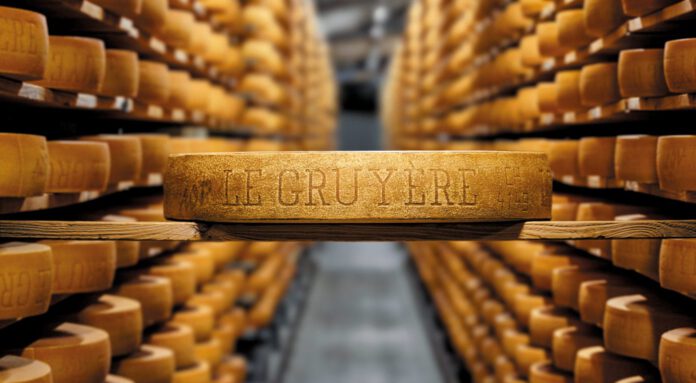What does the name mean?
Gruyère cheese is named after the Swiss village of Gruyères, evoking the surrounding green plains and mountains. First produced around 1115, this cheese originated in this region of the canton of Fribourg.
Milk, milk, milk!
To make a 35-kilogram wheel of Gruyère AOP, you need 400 litres of raw milk. This means, you need 12 litres of milk per kilogram of hard cheese, using only milk, salt, rennet and lactic ferments, without any colourings or additives.
Like crystals…
The little white spots that we see on Gruyère AOP cheese are often mistaken for salt. In fact, they are amino acid crystals that form after at least 10 months of maturing.
Swiss Gruyère AOP cheeses have an ID card
With a multitude of producers, cheese dairies and ripeners, each wheel of Gruyère AOP bears a nameplate with a unique number, indicating its origin and date of manufacture.
Swiss Gruyère is protected by a Protected Designation of Origin
Only produced in certain Swiss cantons, Gruyère AOP follows strict rules: a defined production area, cow feed, milk collection and traditional production and maturing methods, all regularly monitored.
